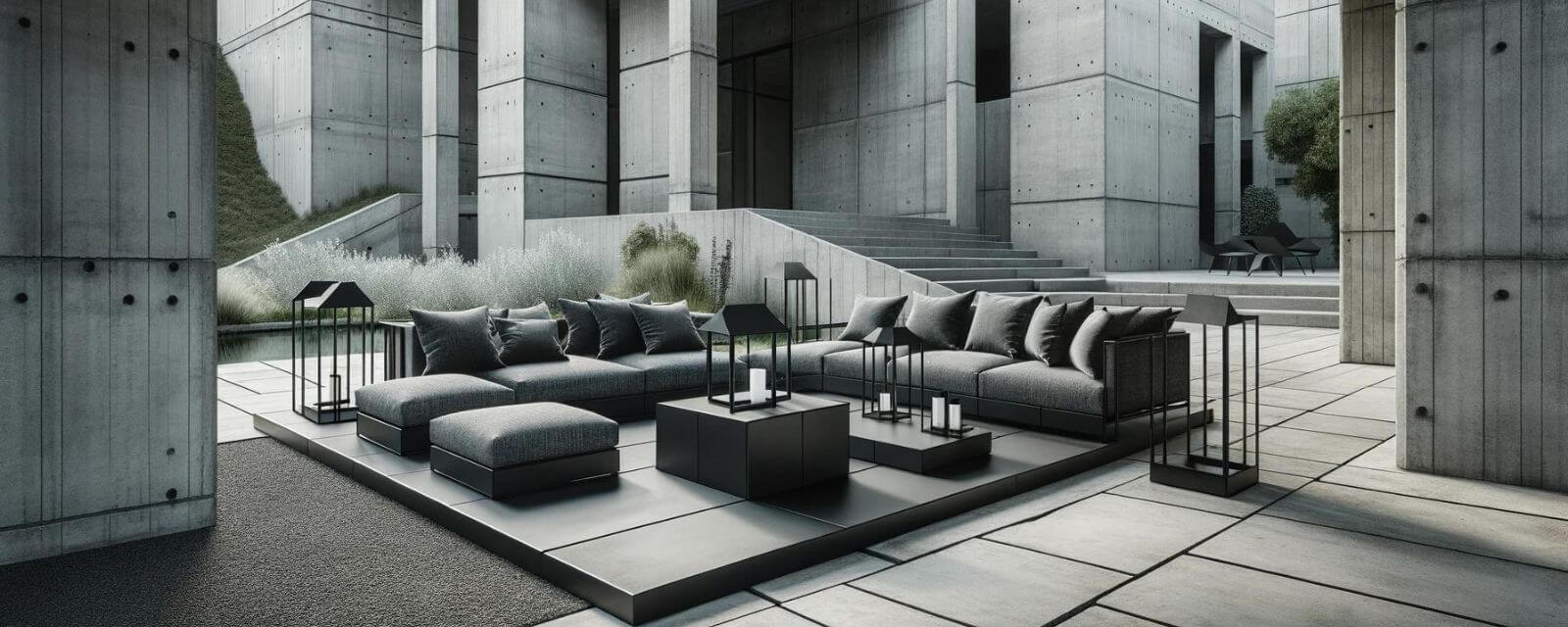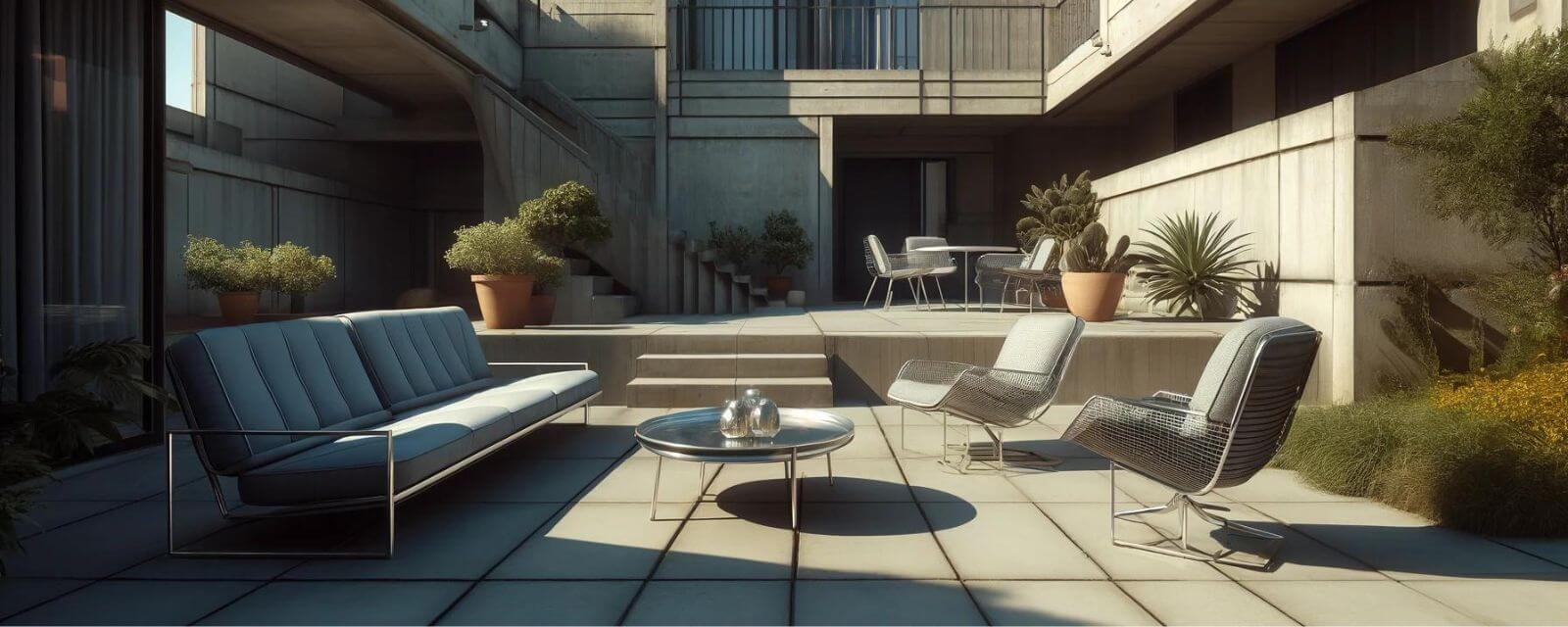


Brutalist architecture isn't just a style—it's a unique legacy in furniture and design. In the early '50s, this style took the "less is more" mantra, threw it out the window, and went full-on with "more is more, and it's all concrete." The Furniture in this style was like the architectural equivalent of wearing work boots to a black-tie event—bold and unapologetically honest.
Imagine Britain in the 1950s: tea, crumpets, and... dark view of "undressed" concrete blocks of buildings. Deriving from the French term "béton brut" or "raw concrete," Brutalism was all about showing off the rough and tough side of buildings. Architects Alison and Peter Smithson decided it was time for a design shake-up. Ditching the dainty designs of earlier decades, they started a philosophy and style movement—practical, hard-wearing, and revolutionary. This movement influenced everything from brutalist-style furniture to brutal architecture and outdoor design.
Post-World War II, Europe needed cheap, practical solutions for housing and buildings, and Brutalism spread faster than a rumor in a high school hallway. Brutalist style became a hit from North America to Asia. Despite being the go-to for budget-conscious governments and universities (because, let's be honest, nothing says "cost-effective" like a giant slab of concrete), by the late '70s, Brutalism started getting a bit of a bad reputation. Critics called it cold. The once-praised towers began to feel more like concrete jungles than a visionary future.

Fast-forward to today, Brutalist buildings stand out with their bold forms. These structures weren't just built; they were sculpted, showing off concrete in every shape and making a feature of everything, for instance, exposed beams. And let's not forget the influence of Brutalist architecture on the world of 1950s furniture—sleek, angular lines and solid forms going indoors and outdoors. But we can't call it a comeback. Brutalism's been here for years, and now it's getting a second chance. Once seen as harsh and uninviting, these concrete tiles are celebrated for their raw, imposing beauty and cultural legacy. It's a testament to the resilience of Brutalist architecture. What was once considered brutal has now become beloved in some countries.

In outdoor design history, the brutalism style is like that loud uncle at family gatherings—it's unrefined and unforgettable and has a portrait on the walls. From its rise as a post-war practicality to its status as a cherished heritage, Brutalism's history is one of stability and legacy. As we continue to argue over what makes a space inviting or oppressive, Brutalism reminds us that architecture isn't just about buildings—it's about a combination of indoor and outdoor furniture.
Brutalist architecture in outdoor design is characterized by its use of concrete and steel materials and its emphasis on geometric, block-like structures. Brutalism promotes a stark, monumental appearance in outdoor spaces that makes a bold statement. Brutalist style highlights the contrast between organic elements and the imposing rigidity of man-made structures.
Brutalist-style furniture in a patio setting typically features heavy, solid forms (almost sculpted) from single material blocks. The color palette remains neutral—grays, blacks, and earth tones dominate, emphasizing texture and form over embellishment. In a patio, Brutalist furniture includes an angular concrete table paired with benches or low, cube-shaped seating. The overall look is one of furniture pieces designed to withstand the elements while making a minimalist yet dramatic visual impact.



